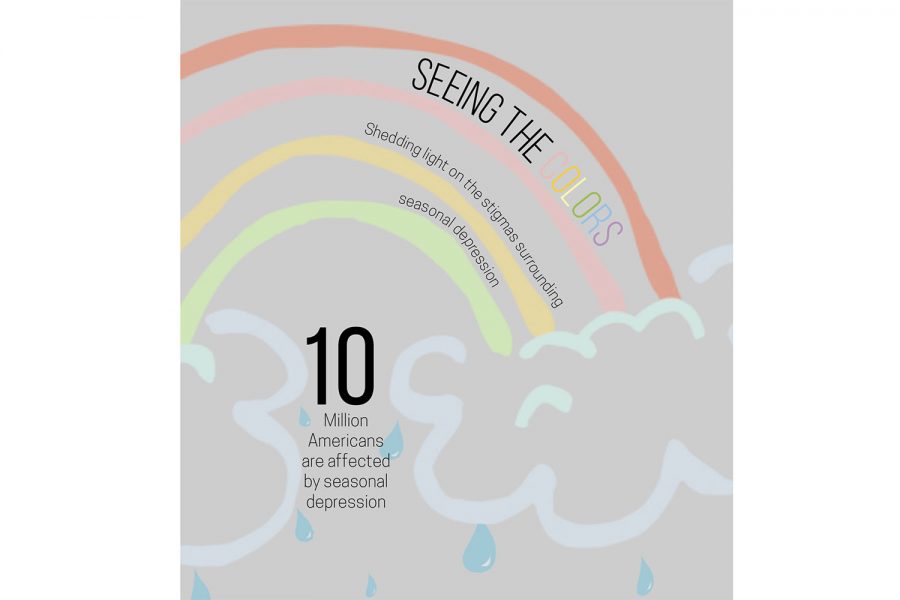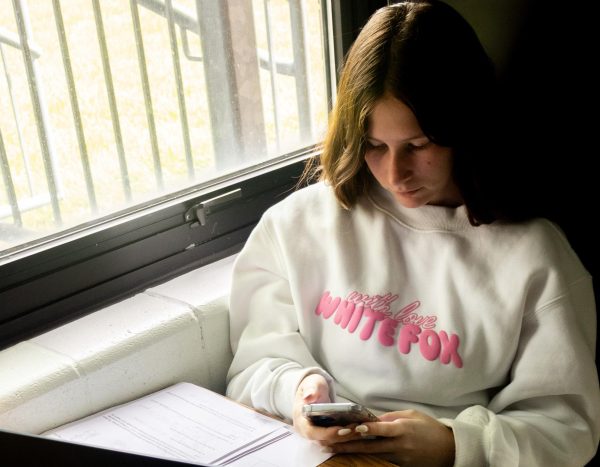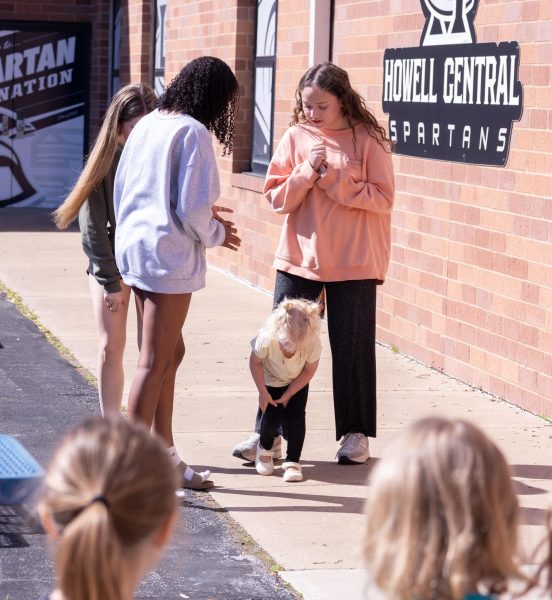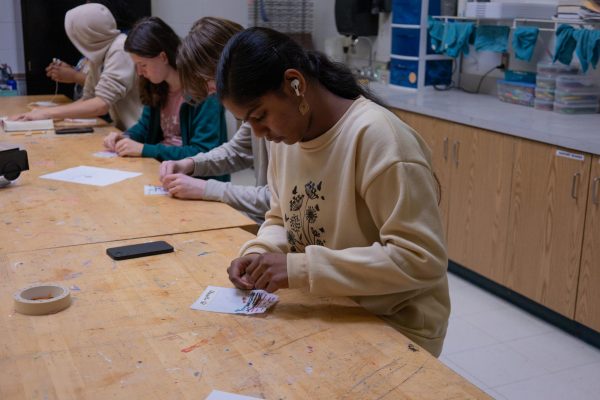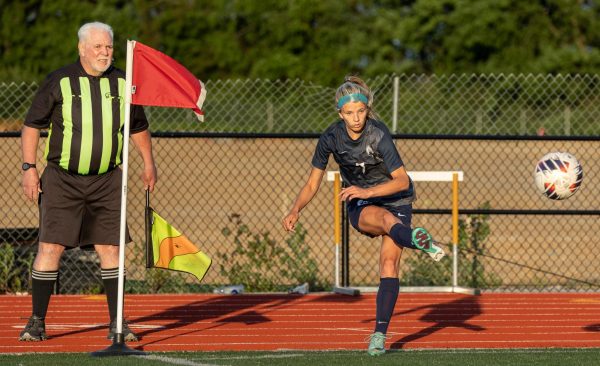Seeing the Colors
Shedding light on the stigmas surrounding seasonal depression
Waking up to clouds gathering overhead. The snow is starting to fall, the cold rushing up against the window pane, leaking into the room through cracks in the walls built up to withstand more than just a little winter storm.
Just like that, one small breeze from Father Winter himself has sent those walls cracking open. Without strength to mend the walls, pulling the covers tighter, sleeps retakes the body. On and on it goes, fitful awakenings, the sight of the ever present storm, and the draining atmosphere that calls to sleep once more to reprieve the cold, if only for a little while until the sun comes back again. For junior Sophia Spraggins, this storm affects her life frequently, making it difficult to get through the day.
“It’s like normally you feel like there’s a cloud over you, and then from a cloud to like a thunderstorm,” Spraggins explained. “And, every day you’re just like I don’t want to be here. I don’t want to deal with this.”
Seasonal depression. It is an actual condition. It is a reality for a variety of people. It is difficult to get through. It is not grounds for teasing. It is not just a joke or a game to play. It is not something that can be beaten down with brute force. It is not something that you can get through alone. Guidance Counselor Wendy Ahearn has dealt with the storm of winter walking into her office on many occasions, each one just as real as the last.
“This isn’t something to be ashamed of,” Mrs. Ahearn says to students. “This is something that you’re going through and we can support you, but people need to know what’s happening.”
Starting usually when the weather begins to get colder, and the days get shorter, seasonal depression has been nicknamed the winter blues. Seasonal depression is not explicitly confined to only winter months, for some it is summer and spring when they feel it start to kick in, but for English teacher Christina Young the cold is what brings around the blues.
“I feel like there’s not as much to really do when it’s cold and nasty outside, so most people are more like confined; I guess it’s like more cabin fever,” Ms. Young explained. “Then everyone’s busy, so there’s less positive social interaction and that’s really what puts a damper on it.”
It takes a lot to reach out, to get help, to try to get better. Not everyone’s remedy is the same. For senior J.J. Grgurich, going to a counselor and therapist led him to find some ways to help improve his condition.
“I’ve tried going to a counselor and she recommended taking fish oil, and all that kind of stuff that has a natural way to kind of help it, and I noticed that it helped,” Grgurich said.
For others, it is being around other people that helps to keep their seasonal depression in check.
“I’ve tried really hard to not sulk and be in the house … even if I’m going to go to a coffee shop or if I’m going to go to Target because Target makes everyone happy, I just do whatever I can to get out of the house and go to be around people,” Ms. Young said. “When you’re by yourself, that’s when you can get into thought spirals and you can get sadder and you know that you should never believe the stuff that you tell yourself when you’re alone and sad.”
A big misconception that people with seasonal depression face is that it is something that should be kept to yourself, alone, under the covers, in bed.
“It’s okay to talk about things and it’s okay to cry about them too,” Spraggins said. “Crying doesn’t make you weak, it never has. It makes you stronger to express your feelings, better than having them in because then you’ll explode.”
Seasonal depression can have a major impact on school when it comes to students and teachers alike. The storms going on inside their heads are just too much to carry around their day to day life.
“One of the big factors is attendance,” Mrs. Ahearn said. “So, it can be harder to get out of bed; it can be harder to feel motivated to come to school. So, attendance can be the best red flags for why this student comes to my attention.”
It is the lack of energy that rains down causing a lack of motivation that leaves students drowning in their beds, not able to get up and face a normal school day.
“I noticed that I was tired a lot and that I never really had much energy to do anything, and whenever I did, it was like I was giving all my energy and I still couldn’t give 100 percent,” Grgurich said.
The most important thing, according to Mrs. Ahearn, to remember about seasonal depression is there are ways to get help, and that storms do not last forever.
“This is more common than people might realize,” Mrs. Ahearn said. “This is an issue with teenagers and adults. The main thing is to talk about it, seek support, try to find things to help you. Take action and try to get connected to resources.”
Sometimes the rain has really stopped, but unaware under our covers, only cold and wetness creep in. No light or sun penetrates the solitude of seasonal depression, except when stopping to peek out of the covers. Allowing the eyes to adjust, seeing the rainbow beginning to form, all along it was coming in
to view. The sky, still grey, is beginning to open up, the wind and cold subsiding, while the head becomes a little clearer, a little less cloudy and a little more full of color.
Your donation will support the student journalists of Francis Howell Central High School. Your contribution will allow us to purchase equipment and cover our annual website hosting costs. FHCToday.com and our subsequent publications are dedicated to the students by the students. We hope you consider donating to allow us to continue our mission of a connected and well-informed student body.



